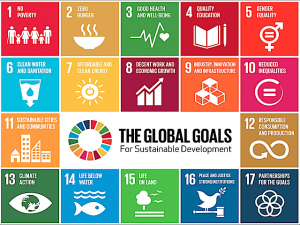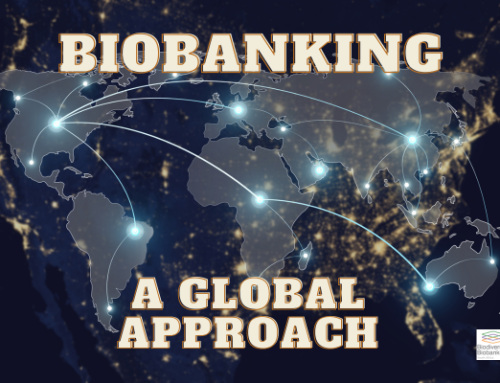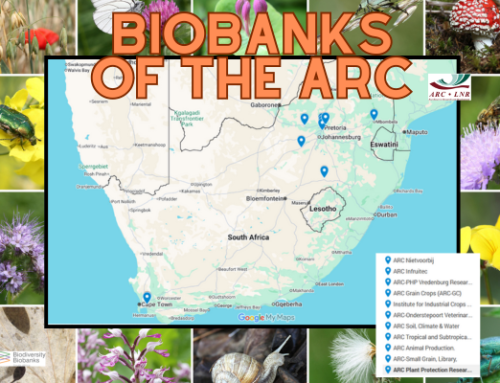Saving The World Through Biobanking: BBSA & the Sustainable Development Goals
The UN Sustainable Development Goals are an urgent call for countries to come together in a global partnership to improve health and education, reduce inequality, and save our environment. It’s a noble goal – but how can a developing country like South Africa hope to address these massive challenges? Well, here’s one thing that can help: biobanking.
“South Africa is considered to be one of the megadiverse countries globally,” notes Professor Michelle Hamer, Project lead for the Biodiversity Biobanking South Africa (BBSA) research infrastructure project. “Our exceptionally rich and unique biodiversity offers many economic opportunities, and the potential for research, innovation and discovery in a wide range of fields and sectors – including biobanking.”

The UN Sustainable Development Goals are an urgent call for countries to come together in a global partnership to improve our world.
The BBSA provides a coordinating structure across several of South Africa’s biodiversity biobanks, with the main aim of increasing the range and quality of samples stored and/or distributed, and increasing and improving access for research and development through a single, centralised data portal, which will also allow more strategic collection of samples.
Biodiversity biobanks collect and store a wide variety of materials, including tissue, cells, blood, saliva, plasma or DNA, from or representing plants, animals and microbes (fungi, bacteria and viruses). These biobanks are critical infrastructure for the field of science – and research and data from these collections contribute to solving problems of national and global relevance.

The vision of the BBSA is about securing and exploring South Africa’s biodiversity – and increasing and improving access for research and development.
“The BBSA is a network. It’s a community of people who work in and with biobanks to ensure that these irreplaceable national and global assets survive for future generations of researchers and ordinary citizens, and that they are used in many ways to solve societal problems.”
What sorts of societal problems?
Well, out of the 17 SDGs, South Africa’s biobanks can contribute to the achievement of no less than 11 of them. Here’s how that works…
- Zero Poverty: Biobanks provide materials for the development of industries related to natural resources, like tourism, conservation and clean energy. Benefit sharing from these industries can help reduce poverty – as can management of invasive alien species.
- Zero Hunger: Biobanks like those at the University of the Free State Yeast Culture Collection provide materials for use in improved crops, livestock and soil fertility, conservation and production of indigenous crops and other food sources, as well as conservation of pollinators.
- Good Health And Well-Being: Biobanks provide materials used in research and development related to conservation and sustainable use of plants and animals used in traditional medicines, development of new medicines and products from biodiversity (eg. marine species), understanding of zoonotic diseases and disease vectors such as malaria-transmitting mosquitoes and pathogenic microbes.
- Quality Education: The BBSA’s participating biobanks provide materials for postgraduate studies, training of staff in use of new and advanced technologies relevant to biobanking.
- Clean Water And Sanitation: Biobanks provide materials for the development of new products for water purification and for sanitation in arid environments, and understanding of organic water contaminants and water borne diseases.
- Affordable And Clean Energy: By investigating microbial and plant biodiversity, biobanks like the Institute for Microbial Biotechnology and Metagenomics (IMBM) can aid in the development of new biofuels, decreasing our reliance on fossil fuels.
- Industry, Innovation And Infrastructure: Provision of materials for a wide range of scientific research and development – and particularly with regard to the basic science of taxonomy, which documents, catalogues, describes and names species.
- Responsible Consumption And Production: Provision of materials for research into drought-resistant crop development, new products for waste decomposition and mediation of pollutants and toxins, development of new products for building, textiles, fuels)
- Climate Action: Provision of materials for use in research to promote understanding of genomic level adaptation to climate change, storing germplasm for conserving species threatened through climate change, development of crops / crop enhancement to adapt to climate change.
- Life Below Water: The NRF-SAIAB biobank provides a repository for samples representing marine biodiversity to identify potential new products or resources, monitoring genetic diversity and understanding of gene flow between populations of harvested species to inform sustainable quotas.
- Life On Land: Biobanks like the SANBI Wild Plant Seed Bank provide storage of materials for conservation of threatened species, restoration of degraded habitats, resources for identification of illegally traded plants and animals.
Biobanks are important all around the world. But it’s in the developing world that these resources could be especially powerful tools because of our very rich and unique biodiversity
As Prof Hamer explains: “We all need to work together to protect our biodiversity and use it in a sustainable way that contributes to the country and its people. Biodiversity biobanks play a role in this agenda, and by contributing to expanding the holdings, and sharing materials we can work more effectively and efficiently. The biobanks must be seen as national assets and resources to be used for meaningful research, capacity development and product development in the interests of all.”
Want to know more about the Biodiversity Biobanks South Africa? Find out here. And while you’re at it, why not learn more about what biobanks are (and aren’t) all about?

What are biodiversity biobanks?
Biodiversity biobanks are repositories of biologically relevant resources, including reproductive tissues such as seeds, eggs and sperm, other tissues including blood, DNA extracts, microbial cultures (active and dormant), and environmental samples containing biological communities….






